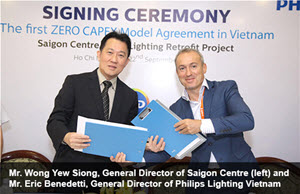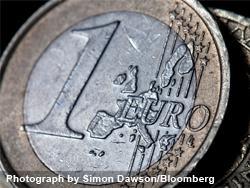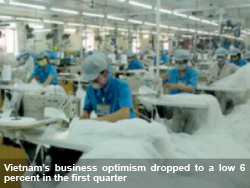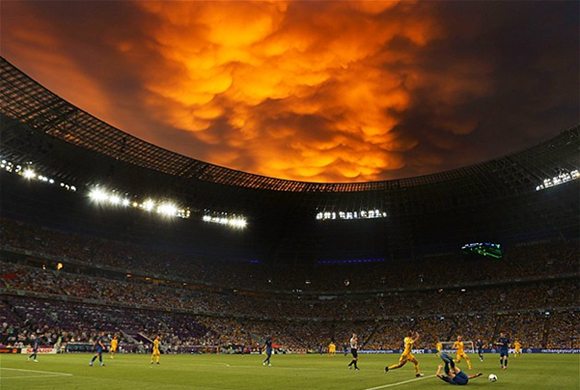
Over the past few years, more CEOs have left their gigs than in the recent past. Is it a sign of a calming economic storm, or something else entirely?
For many CEOs, the economic roller coaster of the past few years has reached a lull. And instead of opting for another go on this particular amusement park ride, many have been eyeing the exits.
According to a recently published report by executive compensation firm Equilar, 361 CEOs at S&P 1500 companies left their offices between 2009 and 2011. Last year, 144 of these CEOs left their companies, according to Aaron Boyd, research director for Equilar, up from 129 and 110 in 2009 and 2010, respectively.
CEO departures -- which include retirements, resignations, promotions, or taking on a new position – have stepped up as the economic climate, which had been battered in 2009 and 2010, began to steady last year in the U.S., according to Equilar"s study.
MORE: Harvard Biz students dish on admissions interviews
"It"s kind of like a tea kettle that boils," says Peter Thies, a partner in KornFerry International, the executive search firm. "When times are tough, more introspection goes on and boards want to show good fiduciary oversight."
As the economy smoothed out somewhat last year, company boards took a breather from worrying about corporate stability -- and sometimes survival -- and began looking ahead to position their company with a new vision, along with new leaders.
"When the recession first hit, it was hard for boards of directors to place blame for company shortcomings on an incumbent CEO because what they were experiencing was largely universal," explains David Gaspin, manager of talent acquisition for TheLadders, an executive search site.
Later, many "companies weren"t seeing their own recoveries tracking with the market," says Gaspin, and when that happens "it becomes much easier to lay blame (right or wrong) at the feet of a CEO."
John Challenger, chief executive of the global outplacement firm Challenger, Gray & Christmas, says executive departures that his company tracks show "a spate of change as the economy heads in new directions, and companies seek new CEOs with different skills."
He also points out that this year, so far, companies are putting the brakes on departures. The number of exits, AT 891, has been fewer this year than the same nine-month period in 2011, according to Challenger statistics, a development that the company says appears to mirror the larger labor market.
"It"s a static market, where there are not a lot of hires and not a lot of layoffs," Challenger says.
MORE: Job swaps: Are they for you?
Currently, there is a "more stable business landscape in general -- especially among higher profile companies whose CEOs are likely to make headlines," Gaspin agrees. "When better conditions are visible to shareholders and boards," he adds, "turnover among top executives drops sharply."
The notable exception is the health care industry, which saw a 23% uptick in CEOs changing jobs during the first nine months of this year, according to figures supplied by Challenger. "The numbers have been exacerbated by the changing landscape for health care, and companies trying to see how it will shake out," he says.
The health industry always has been a top area for CEO turnover, Challenger notes, simply because of the sheer number of hospitals and health providers.
The financial and information technology industries also had more recent leadership departures than other industries, but that is routine for such volatile sectors, says Challenger. The services sector, because of its vast size, experienced the most turnover, with 88 companies changing CEOs to date this year, according to Challenger firm figures.
So far this year, chief executive turnover has declined, with only 95 departures in September, the lowest number of exits since the last three months of 2011. September"s total was down by 8.7%, from 104 exits in August. And last month"s total departures, 108, was 12% lower than the same month in 2011.
Were boards of directors just bolder last year? Their goal is "to provide steady and familiar leadership in economic turbulence," says Gary L. Neilson, a senior partner at management consulting firm Booz & Co. and co-author of a recent study on CEO succession. It"s when economic times improve that "companies look to change CEOs to provide new ideas and strategies," he says.
"Boards are under a lot of pressure, but a lot of them are saying, "just hold on,"" says Neilson, referring to this year"s decline in departures, "because ups and downs are more expected now. And transition to a new leader can take a lot of time."
MORE: A CEO takes on the war for talent
This sort of caution has not exactly inspired boldness among board members when it comes to CEO gender diversity. Only 6.6% of incoming CEOs, for example, were women, between 2009 and 2011, according to Equilar. That"s an uptick from the 3.2% of women CEOs who departed during the same three-year period.
Still, women made some strides at the top. Some 23 companies in the Equilar study hired a female for their top post to replace a departing man, slightly boosting the 3.8% of women who are CEOs of Fortune 500 companies.
By Elizabeth G. Olson - Source: Fortune

3.jpg)





















